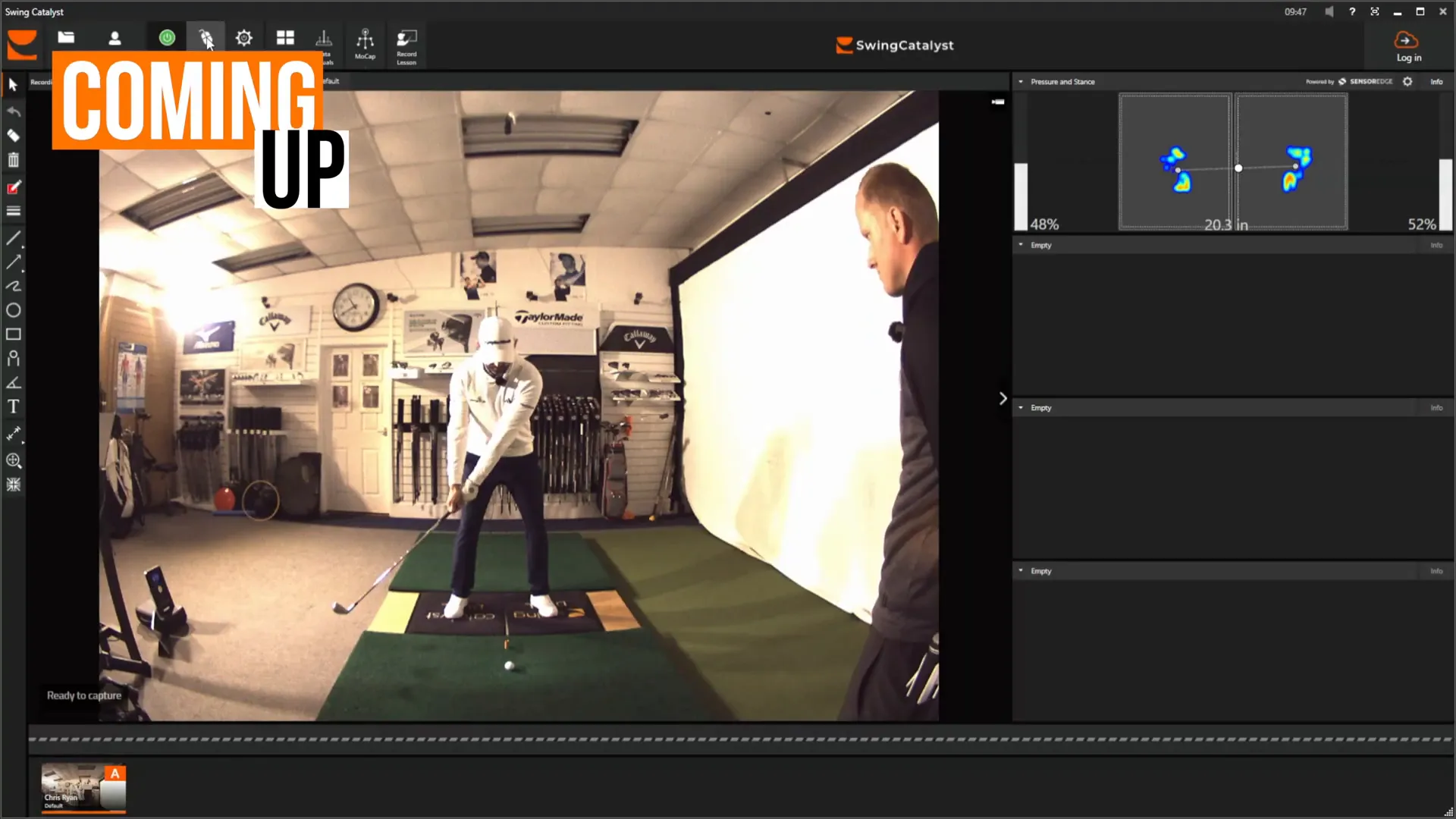
Revolutionize Your Golf Swing with Optimal Weight Shift Techniques
Struggling with your golf swing consistency or lacking the distance and power you desire? It’s time to tackle the weight shift issue head-on. This comprehensive guide reveals common pitfalls in weight distribution and offers solutions backed by insights from renowned golf coach Chris Ryan and analyst Joe. Forget the outdated advice and unlock a powerful, accurate swing by mastering your weight shift.
Table of Contents
- Step 1: Understanding the Common Weight Shift Mistake
- Step 2: Why Traditional Weight Shift Advice Is Flawed
- Step 3: The Importance of Early Weight Shift to the Trail Side
- Step 4: Transitioning Smoothly Back to the Lead Side
- Step 5: The Problems with Late Weight Shift and Static Takeaways
- Step 6: How Early Weight Shift Improves Rhythm and Power
- Step 7: Simple Drill to Feel the Correct Weight Shift
- Step 8: Practicing Extreme Weight Shifts to Build Awareness
- Step 9: Narrowing Your Stance for Better Weight Shift Control
- Step 10: Summary of Optimal Weight Shift Patterns
- Frequently Asked Questions About Weight Shift in Golf
- Final Thoughts: Fix Your Weight Shift and Transform Your Golf Swing
Step 1: Understanding the Common Weight Shift Mistake
Many golfers are stuck in a detrimental weight shift cycle. The biggest mistake? Keeping weight distribution static. Here’s the typical scenario:
- Start with 50/50 weight distribution.
- Maintain a static distribution during the backswing.
- Shift late to the trail side at the top—often too abruptly.
“The biggest thing I tend to see with people is they’re very static under the notion that less movement gives them more consistency.” – Joe, golf analyst
This late shift leads to poor contact, reduced power, and inconsistent ball striking.
Step 2: Why Traditional Weight Shift Advice Is Flawed
Many golfers have incorrectly been advised to load up on the back leg at the top of the backswing. Here’s why it’s misguided:
- A static top position hinders a fluid swing.
- Excessive weight on the back leg complicates forward transition.
“If you’re thinking that you need eighty percent of your weight in your back leg at the top, try and take that in your mind and just throw it in the bin.” – Joe
Aim for 55% on the lead foot at the top for better swing sequencing.
Step 3: The Importance of Early Weight Shift to the Trail Side
Professional swings reveal a key insight: initiate the weight shift early in the backswing. This ensures:
- Smoothness in weight transfer.
- Peak pressure on the trail foot mid-backswing.
- A subtle, controlled sway, typical of advanced golfers.
“Sway gets a bad rap. Every golfer sways, they might not think they sway, but they do.” – Joe
This movement builds energy and sets up a powerful downswing.
Step 4: Transitioning Smoothly Back to the Lead Side
After reaching the top of the backswing, it’s crucial to shift back to the lead side as you start your downswing:
- Shift weight subtly onto the lead side.
- Avoid sudden drops; aim for control and balance.
Think of it like throwing a stone — load and then unleash effortlessly.
Step 5: The Problems with Late Weight Shift and Static Takeaways
Experiment with a late weight shift to feel the issue:
- Adopt a 50/50 setup.
- Maintain a static start with no weight movement.
- Shift weight late in the backswing.
You’ll notice a lack of distance and an awkward swing feel due to disrupted rhythm.
“It just makes it really, really difficult to get the club bottoming out after the golf ball.” – Joe
Step 6: How Early Weight Shift Improves Rhythm and Power
Early and smooth weight shifts enhance swing fluidity, leading to:
- Better rhythm and energy release.
- Improved ground contact.
- Increased distance and consistency.
Step 7: Simple Drill to Feel the Correct Weight Shift
Practice the narrow stance drill to refine weight shift:
- Place a ball between feet and narrow your stance.
- Shift weight early to trail side, then normal stance width.
- Pause at transition, targeting 60% lead side pressure.
Step 8: Practicing Extreme Weight Shifts to Build Awareness
Exaggerate weight shifts for practice:
- Early aggressive trail side weight.
- Full shift to lead side on downswing.
This exaggeration builds better body awareness and movement.
Step 9: Narrowing Your Stance for Better Weight Shift Control
A narrower stance aids in feeling weight transfer:
- Enhances pressure sensing between feet.
- Improves timing control.
- Promotes a balanced swing.
Step 10: Summary of Optimal Weight Shift Patterns
Compare amateur and better player weight shift patterns:
| Stage | Amateur Weight Distribution | Better Player Weight Distribution |
|---|---|---|
| Address | 50% lead / 50% trail | 55% lead / 45% trail |
| Mid-backswing | Still ~50/50 | ~80% trail side (early weight shift) |
| Top of backswing | ~80% trail side (late shift) | ~55% lead side (balanced, ready to transition) |
| Downswing | Struggles to shift forward fully | ~80% lead side (proper weight transfer) |
Emulating better player patterns boosts rhythm and power.
Frequently Asked Questions About Weight Shift in Golf
Q: Why do so many golfers keep their weight static during the backswing?
A: Believing less movement brings consistency, golfers maintain a static balance, leading to late shifts and power loss.
Q: How much weight should be on my lead foot at the top of the backswing?
A: Aim for 55% lead foot weight for balanced transition and sequencing.
Q: Is it bad to sway during the backswing?
A: A slight sway is beneficial, aiding early trail side weight shift and energy build-up.
Q: What drill can I use to practice proper weight shift?
A: The narrow stance drill helps you master early trail side and smooth lead side shifts.
Q: Will changing my weight shift pattern affect my swing tempo?
A: Improved weight shift enhances swing rhythm and tempo, making it fluid and natural.
Final Thoughts: Fix Your Weight Shift and Transform Your Golf Swing
Understanding and implementing the correct weight shift can significantly improve your golf swing. By emulating professional patterns, exaggerating movements during practice for awareness, and using drills, you enhance ground contact and increase power. The goal is a fluid, consistent swing powered by an efficient weight shift—critical for optimal performance on the golf course.
Use trusted resources, consider technology and data for swing analysis, and start your journey to better golf with a focused practice on weight shift. Enjoy your game with improved power and consistency.


0 Comments